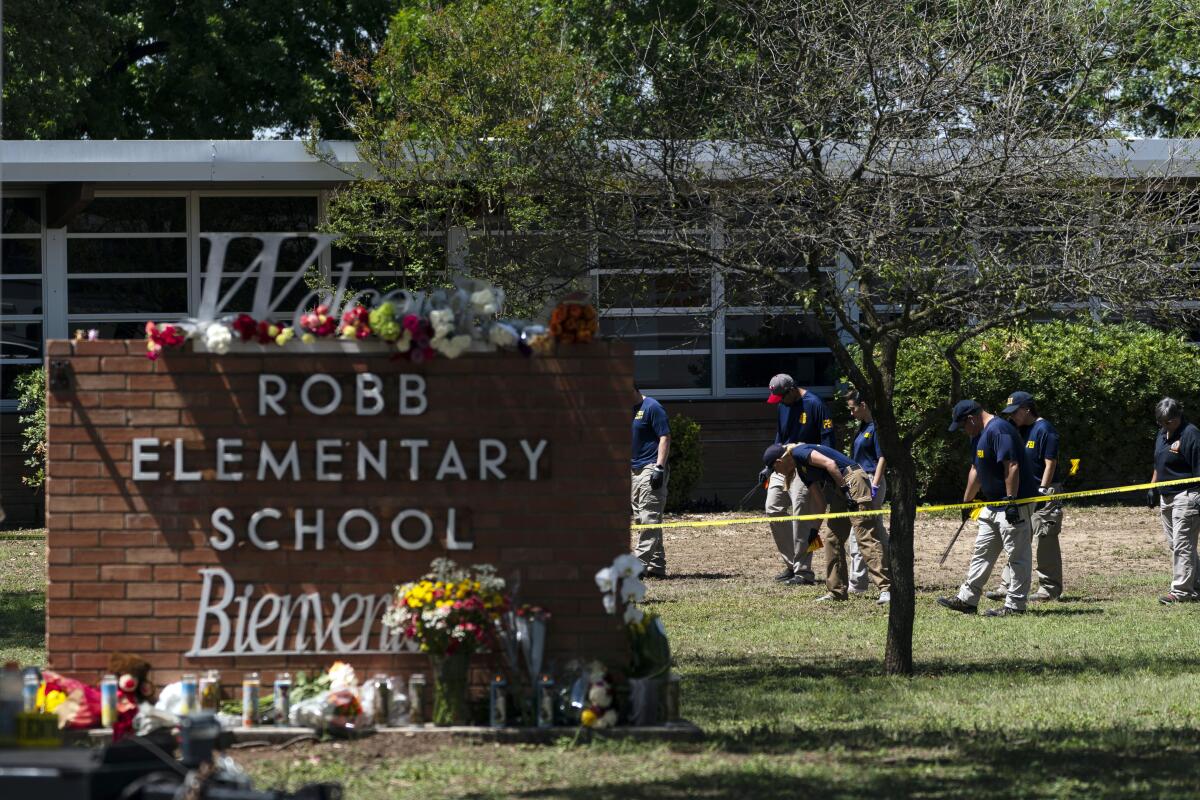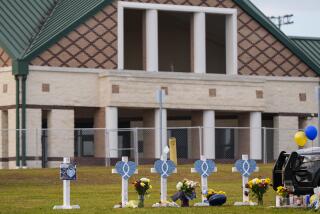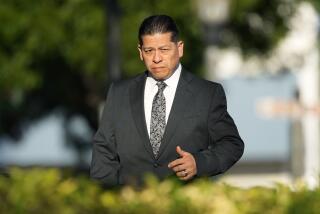New report details missed chances to stop Uvalde shooting

- Share via
AUSTIN, Texas — A police officer armed with a rifle watched the gunman in the Uvalde elementary school massacre walk toward the campus but did not fire while waiting for permission from a supervisor to shoot, according to a sweeping critique released Wednesday on the tactical response to the May tragedy.
Some of the 21 victims at Robb Elementary School, including 19 children, possibly “could have been saved” on May 24 had they received medical attention sooner while police waited more than an hour before breaching the fourth-grade classroom, a review by a training center at Texas State University for active shooter situations found.
The report is yet another damning assessment of how police failed to act on opportunities that might have saved lives in what became the deadliest school shooting in the U.S. since the slaughter at Sandy Hook Elementary School in Newtown, Conn., in 2012.
“A reasonable officer would have considered this an active situation and devised a plan to address the suspect,” reads the report published by the university’s Advanced Law Enforcement Rapid Response Training program.
Authors of the 26-page report said their findings were based on video taken from the school, police body cameras, testimony from officers on the scene and statements from investigators. Among their findings:
— It appeared that no officer waiting in the hallway during the shooting ever checked whether the door to the classroom was locked. The head of Texas’ state police agency has also faulted officers on the scene for not checking the doors.
— The officers had “weapons (including rifles), body armor (which may or may not have been rated to stop rifle rounds), training, and backup. The victims in the classrooms had none of these things.”
— When officers finally entered the classroom at 12:50 p.m. — more than an hour after the shooting began — they were no better equipped to confront the gunman than they had been up to that point.
— “Effective incident command” never appears to have been established among the multiple law enforcement agencies that responded to the shooting.
The gunman, an 18-year-old with an AR-15-style semiautomatic rifle, entered the building at 11:33 a.m. Before that a Uvalde police officer, whom the report did not identify, saw the gunman carrying a rifle toward the west hall entrance. The officer asked a supervisor for permission to open fire, but the supervisor “either did not hear or responded too late,” the report says.
When the officer turned back toward the gunman, he already gone inside “unabated,” according to the report.
The officer was 148 yards away from the door, which the report says was within the range of his rifle, and reportedly said he was concerned that an errant shot could have penetrated the school and injured students inside.
“Ultimately, the decision to use deadly force always lies with the officer who will use the force. If the officer was not confident that he could both hit his target and of his backdrop if he missed, he should not have fired,” the report reads.
The report is one of multiple fact-finding reviews launched in the aftermath of the worst school shooting in Texas history.
A committee formed by Texas legislators has also interviewed more than 20 people, including officers who were on the scene, behind closed doors for several weeks. On Wednesday, the committee said Uvalde County Sheriff Ruben Nolasco has refused to meet with them and sent a letter trying to compel his testimony. Nolasco did not immediately respond to an email seeking comment.
It follows testimony last month in which Col. Steven McCraw, director of the Texas Department of Public Safety, told the state Senate that the police response was an “abject failure.” He pinned particular blame on Chief Pete Arredondo, saying that as on-scene commander the Uvalde schools police chief made “terrible decisions” and stopped officers from confronting the gunman sooner.
Arredondo has tried to defend his actions, telling the Texas Tribune that he didn’t consider himself the commander in charge of operations and that he assumed someone else had taken control of the law enforcement response. He said that he didn’t have his police and campus radios but that he used his cellphone to call for tactical gear, a sniper and the classroom keys.
According to the report released Wednesday, Arredondo and another Uvalde police officer spent 13 minutes in the school hallway during the shooting discussing tactical options, whether to use snipers and how to get in through the classroom windows.
“They also discussed who has the keys, testing keys, the probability of the door being locked, and if kids and teachers are dying or dead,” the report reads.
McCraw said police had enough officers and firepower on the scene of the Uvalde school massacre to have stopped the gunman three minutes after he entered the building, and they would have found the door to the classroom where he was holed up unlocked had they bothered to check it.
A lawyer for Arredondo and a spokeswoman for the Uvalde city police department did not immediately respond to requests for comment. Arredondo is on leave from his job with the Uvalde Consolidated Independent School District and resigned from his position as a city councilor last week.
Leaders including Texas Gov. Greg Abbott initially praised the police response in Uvalde. Abbott said officers reacted quickly and ran toward the gunfire with “amazing courage” to take out the killer, thereby saving lives. He later said he was misled.
In the days and weeks after the shooting, authorities gave conflicting and incorrect accounts of what happened. The fallout has driven recriminations and rifts between local and state authorities. On Tuesday, Uvalde Mayor Don McLaughlin and state Sen. Roland Gutierrez released a letter asking Abbott to move administration of a victims relief fund from the local prosecutor’s office to the Texas Department of Emergency Management. They wrote that they’ve received numerous complaints about Dist. Atty. Christina Mitchell Busbee, “including the failure to timely deliver victim’s compensation resources to those in need.″
Busbee’s office declined to comment Wednesday.
More to Read
Sign up for Essential California
The most important California stories and recommendations in your inbox every morning.
You may occasionally receive promotional content from the Los Angeles Times.










